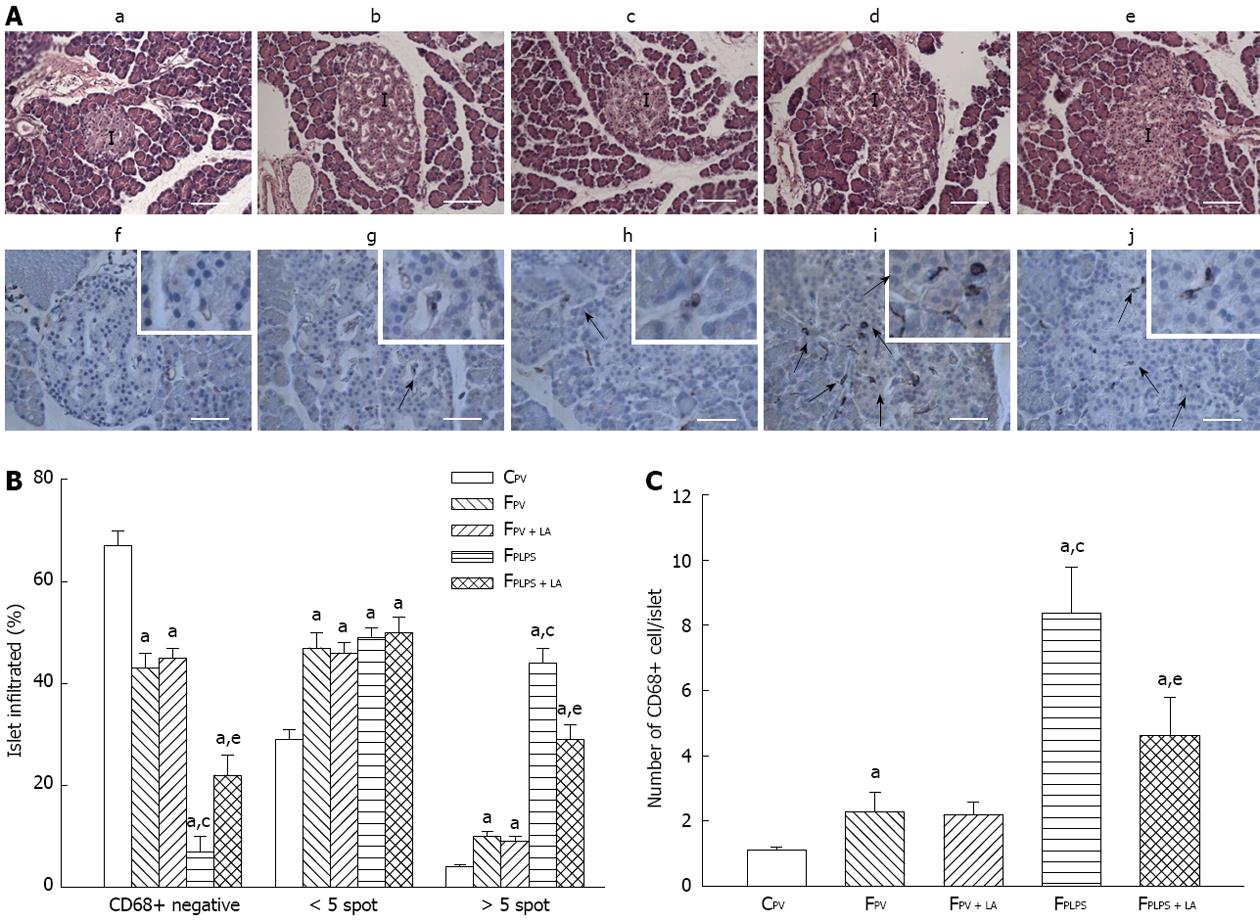Copyright
©2013 Baishideng Publishing Group Co.
World J Gastroenterol. May 14, 2013; 19(18): 2761-2771
Published online May 14, 2013. doi: 10.3748/wjg.v19.i18.2761
Published online May 14, 2013. doi: 10.3748/wjg.v19.i18.2761
Figure 5 Histopathologicalexamination of pancreatic islets.
A: Tissue samples from each subset of animals were analyzed by hematoxylin and eosin (HE) staining (a-CPV, b-FPV, c-FPV + LA, d-FPLPS, e-FPLPS + LA) and immunostaining with an antibody against CD68 (f-CPV, g-FPV, h-FPV + LA, i-FPLPS, j-FPLPS + LA); This data was then quantitated as (B) percentage of islets infiltrated and (C) number of CD68+ cells per islet. Arrows indicated CD68-positive cells. I: Islet. A total of 100 ± 25 islets per experimental group were blindly scored for CD68-positive cells around the periphery and/or within islets from 5 to 6 different animals. Islet area was measured by the area of islet capsule in pancreatic section with HE stain and computed using AxioVision LE 4.8.2.0 software. Values are expressed as mean ± SE, n = 6 per group. Line bar: 50 μm. aP < 0.05 vs CPV; cP < 0.05 vs FPV; eP < 0.05 vs FPLPS. C: Regular diet; F: High-fructose enriched diet; LA: Lipoic acid; LPS: Lipopolysaccharides.
- Citation: Tian YF, He CT, Chen YT, Hsieh PS. Lipoic acid suppresses portal endotoxemia-induced steatohepatitis and pancreatic inflammation in rats. World J Gastroenterol 2013; 19(18): 2761-2771
- URL: https://www.wjgnet.com/1007-9327/full/v19/i18/2761.htm
- DOI: https://dx.doi.org/10.3748/wjg.v19.i18.2761









